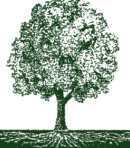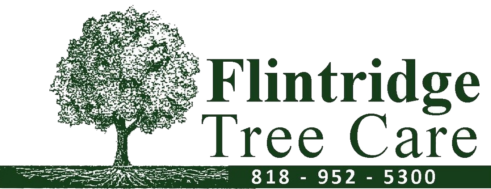Since 1971
Pasadena, Altadena, Glendale, South Pasadena, San Marino, Sierra Madre, Arcadia, Etc.
Why Summer is the Right Time to Trim Your Trees in California
When the sun is high and the days are long, many California homeowners turn their attention to summer landscaping—and tree trimming should be at the top of the list. While winter is often associated with pruning, summer tree trimming in California offers unique advantages for the health, safety, and beauty of your trees.
Benefits of Summer Tree Trimming in California
1. Improved Tree Health
Summer pruning helps control fast-growing branches and removes weak or diseased limbs. By trimming during the growing season, your tree can redirect nutrients to its healthiest branches, leading to stronger growth and better resistance to pests and diseases.
2. Fire Prevention and Safety
In California’s dry summer months, reducing wildfire risk is critical. Removing deadwood, overhanging branches, and excess growth minimizes fuel sources around your home. Properly spaced trees and trimmed canopies also improve access for emergency vehicles.
3. Better Visibility of Problem Areas
During summer, full foliage makes it easier to spot dead, diseased, or pest-infested branches. You can also see which branches are blocking sunlight, crowding others, or growing in the wrong direction.
4. Enhancing Curb Appeal
A well-trimmed tree not only looks better but also helps your landscape flourish. Pruning trees in hot weather encourages balanced growth and ensures your garden receives optimal sunlight and airflow.
5. Protecting Structures and Power Lines
Tree limbs growing too close to your roof, windows, or utility lines can become a hazard during summer storms or dry winds. Strategic trimming keeps your property safe and avoids costly repairs or power outages.
Best Practices for Summer Tree Trimming
- Trim in early summer before temperatures peak and heat stress sets in.
- Avoid over-pruning, especially for shade trees; removing more than 25% of the canopy can shock the tree.
- Use clean, sharp tools to make smooth cuts and reduce the risk of disease.
- Hire a certified arborist if your trees are tall, near power lines, or show signs of disease.
Trees That Benefit Most from Summer Trimming
Not all trees should be trimmed in summer, but these common California species often respond well:
- Oak Trees – Summer pruning reduces the risk of oak wilt, which can spread during cooler seasons.
- Fruit Trees – Light trimming helps direct energy into fruit production and controls shape.
- Pine and Evergreen Trees – Trimming in summer limits sap flow and helps prevent pest infestation.
When to Avoid Summer Pruning
Avoid trimming during extreme heatwaves, which can stress the tree and cause sunscald. Also, newly planted or young trees may need time to establish before regular pruning begins.
Final Thoughts
Summer tree trimming in California is more than just an aesthetic decision—it’s a vital part of maintaining healthy, safe, and beautiful trees. Whether you’re reducing fire risk, encouraging healthy growth, or protecting your home, a smart summer pruning schedule will serve you well.
If you’re unsure where to start, consult a local tree care professional. With the right approach, your trees can thrive all season long and beyond.
Eaton Fire Victims
Our Altadena neighbors: we are here to help!
Call: (818) 952-5300
Text:(818)-796-3085
What do you do with your landscaping and trees after a fire?
After a fire, assessing and restoring your landscaping—especially trees and hedges—requires careful evaluation. Here’s how to determine what might survive and how to handle the recovery process:
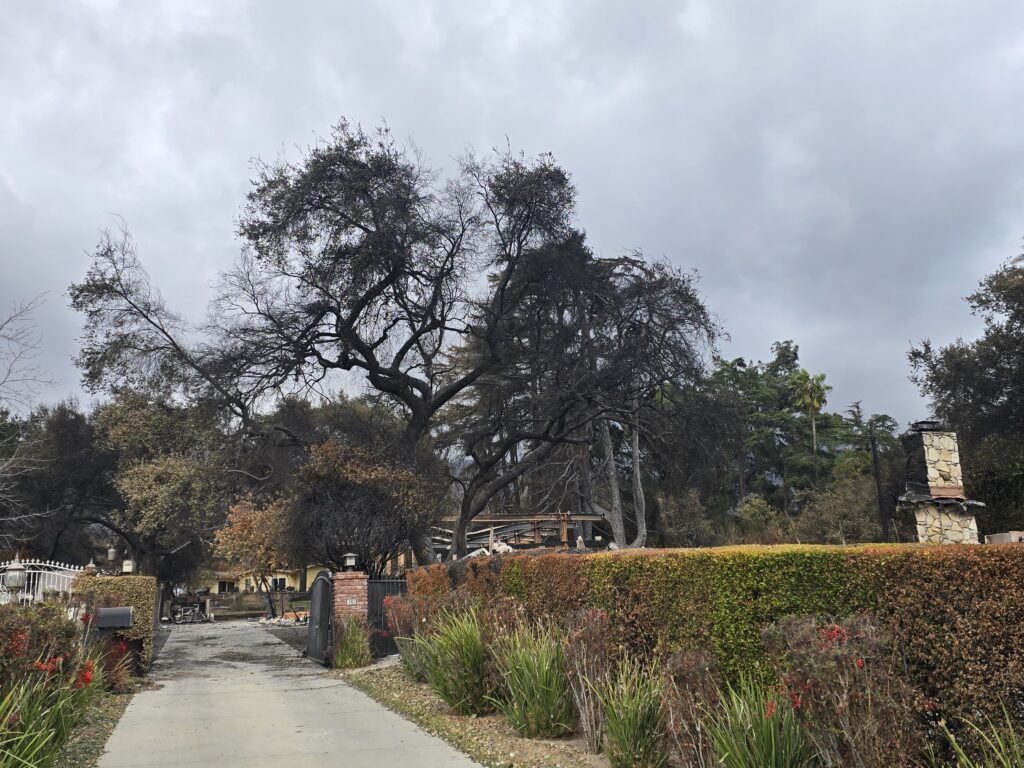
This large Oak can be saved if taken care of properly!
Assessing Trees After a Fire
- Bark & Cambium Test
- If the bark is scorched but intact, the tree may survive.
- Use a knife to scrape a small section of bark—if the cambium (just beneath the bark) is green and moist, the tree is still alive. If it’s dry or brown, the tree is likely dead.
- Leaf & Bud Growth
- Deciduous trees: If they begin sprouting new leaves in spring, they have a chance.
- Evergreens: If needles are completely brown or fall off easily, the tree is likely dead.
- Trunk & Root Damage
- Deep charring or cracks in the trunk suggest irreversible damage.
- If roots are burned underground, the tree may not be stable, even if it shows signs of life.
- Branch Flexibility
- Bend a branch—if it snaps easily and is dry inside, it’s likely dead. If it’s flexible, there’s a chance for survival.
- Soot and Smoke Damage
- Heavy soot or lingering smoke smell in the bark could indicate deeper tissue damage.
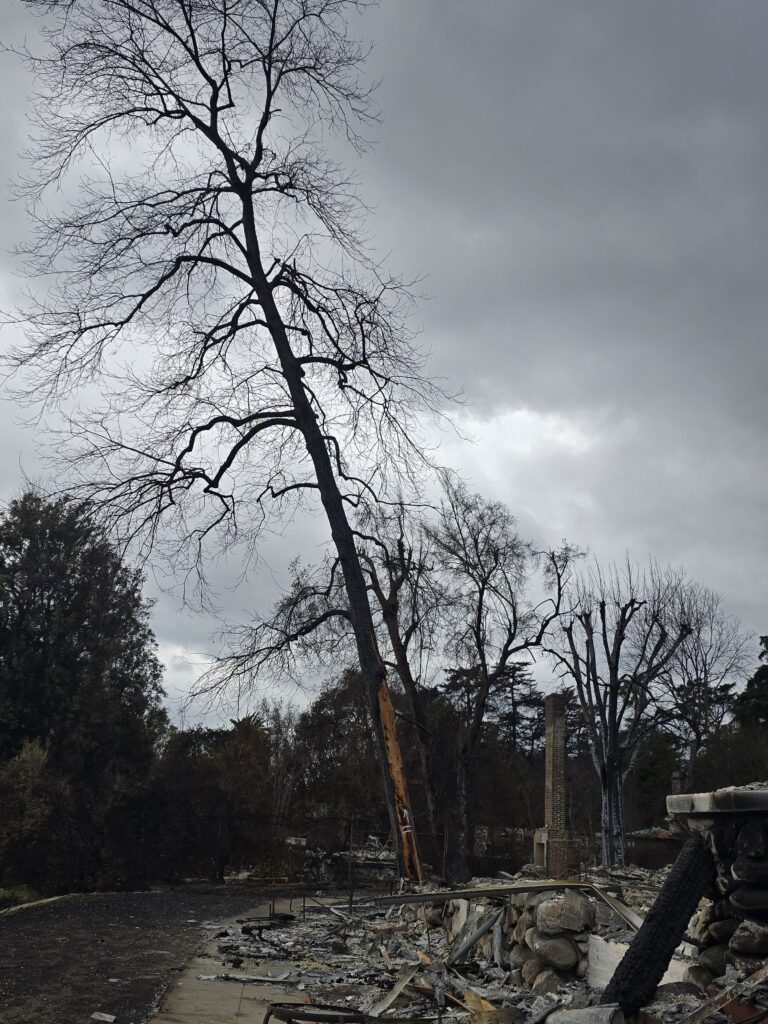
This tree cannot be saved: The cambium layer is dry and burnt and it has root failure.
Determining What Landscaping to Keep
- Hedges and Shrubs: If the roots are intact and there’s some green growth at the base, they may recover. Cut back damaged sections and wait for regrowth.
- Perennials & Ground Covers: Many will regrow from underground parts, even if scorched above. Water and monitor for new shoots.
- Larger Trees: If they provide shade, habitat, or a property boundary, they are worth saving if structurally sound. Consult an arborist for high-value trees.
Clearing & Restoration Tips
- Protect Root Zones: If heavy equipment is needed, mark and protect trees and hedges you want to keep with fencing or barriers.
- Remove Hazardous Trees: Dead or structurally weakened trees should be removed to prevent future damage.
- Soil Recovery: Fire can alter soil chemistry—test the soil and amend it with organic matter, mulch, or biochar.
- Erosion Control: Use mulch, logs, or temporary plant cover to prevent soil loss.
Call: (818) 952-5300
Text:(818)-796-3085
Fire Prevention
Are Your Trees and Landscaping Prepared? Call or text for a FREE assessment!
Call: (818) 952-5300
Text:(818)-796-3085
La Canada Flintridge is the Severity Zone. Are you prepared?
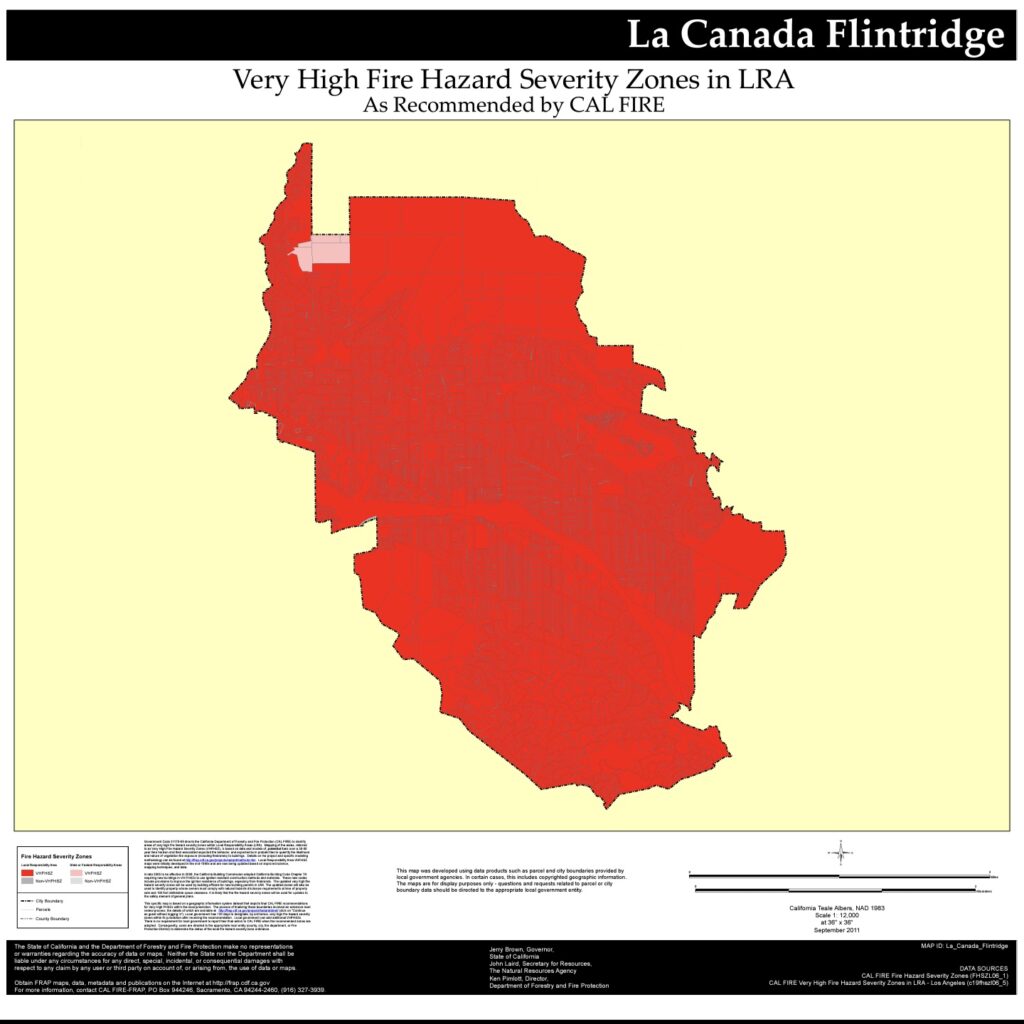
With all the rain this winter comes a lot of new vegetation growth that we need to manage!
Please call us if you have Trimming and Clearing needs.

Don’t Forget
1. Create Defensible Space
Defensible space is the buffer you create between a building on your property and the grass, trees, shrubs, or any wildland area that surrounds it. This space helps to slow or stop the spread of wildfire and protects your home from catching fire—either from direct flame contact or radiant heat.
Zone 1: The Immediate Zone (0-5 feet from buildings)
- Remove all dead plants, grass, and weeds.
- Keep roofs and gutters clean.
- Use fire-resistant landscaping plants.
Zone 2: The Intermediate Zone (5-30 feet from buildings)
- Trim trees regularly to keep branches at least 10 feet from other trees.
- Remove dead or dry vegetation.
- Keep lawns and native grasses mowed to a height of 4 inches.
Zone 3: The Extended Zone (30-100 feet from buildings)
- Cut or mow annual grass down to a maximum height of 4 inches.
- Create horizontal spacing between shrubs and trees.
- Remove fallen leaves, needles, twigs, bark, cones, and small branches.
2. Fire-Resistant Landscaping and Hardscaping
Choosing fire-resistant plants and materials can significantly reduce the risk of fire spreading to your home.
- Select Fire-Resistant Plants: These plants are less likely to ignite and include species like rockrose, ice plant, and aloe.
- Hardscaping Elements: Incorporate gravel, stone, or brick pathways and driveways to create firebreaks.
- Mulch with Care: Use non-flammable mulch such as gravel instead of wood chips.
3. Home Maintenance and Preparation
Regular maintenance and preparation can prevent small fires from turning into disasters.
- Clean Roof and Gutters: Regularly remove debris such as leaves and pine needles from your roof and gutters.
- Install Fire-Resistant Roofing: Opt for materials like metal, tile, or asphalt shingles rated for fire resistance.
- Screen Vents: Use 1/8-inch metal mesh to prevent embers from entering your home.
4. Emergency Preparedness
Being prepared for a wildfire is crucial. Have a plan and ensure everyone in your household knows what to do.
- Create an Evacuation Plan: Have a clear, practiced plan for evacuation.
- Prepare a Go-Bag: Include essentials like water, food, medications, important documents, and clothing.
- Stay Informed: Use local resources and apps to stay updated on fire conditions and evacuation orders.
5. Community Involvement
Fire prevention is a community effort. Working together with your neighbors can make a significant difference.
- Join or Form a Firewise Community: Collaborate on fire safety projects and share resources.
- Community Clean-Up Days: Organize events to clear dead vegetation and debris from common areas.
- Support Local Fire Services: Volunteer or donate to support your local fire department.
Conclusion
Fire prevention is a continuous effort that requires vigilance and proactive measures. By creating defensible space, using fire-resistant landscaping, maintaining your home, preparing for emergencies, and engaging with your community, you can significantly reduce the risk of wildfire damage to your property. Stay safe, stay prepared, and
Defensible Space
Frequently Asked Questions

What to know if you receive a clearing notice
- Why am I receiving a notice? Your property is located within a fire hazard severity
zone (FHSZ) identified by the Department of Forestry and CAL FIRE FHSZ Viewer
(ca.gov), or has been historically identified with a potential fire hazard by the Los
Angeles County Fire Department. - What are the Very High, High and Moderate Fire Hazard Severity Zones and who
determines these zones. FHSZs indicate the potential fire hazard on an area of land,
based on several factors, including vegetation, topography, worst case weather
conditions, fire history, predicted flame lengths, burn probability and ember cast. CAL
FIRE is mandated to classify all lands within the state by California Public Resources
Code 4201-4204. - Where does the Fire Department get the authority to conduct defensible space
inspections? The California Public Resources Code 4291 (PRC 4291) defines
requirements for inspections as, “A person who owns, leases, controls, operates, or
maintains a building or structure in, upon, or adjoining a mountainous area, forestcovered lands, shrub-covered lands, grass-covered lands, or land that is covered with
flammable material…”. - There is no brush around my property, why am I being inspected? If your property
is located within a designated FHSZ, an inspection is required. Due to ember cast, this
includes structures inside developments without open land (native vegetation)
immediately adjacent to the structure. - Why is this the first time I am receiving this notice? Available GIS technology and
mapping programs allow the Fire Department to identify all parcels within FHSZs. Prior
to integrating GIS technology within the inspection program, structures were identified
through fire history and visual identification. The new technology allows greater accuracy
and some structures have been identified for the first time. - When will my property be inspected? Depending on the property’s location,
inspections will start in April for desert areas, May 1 for inland areas, and June 1 for
coastal areas. - Do I need to be home when the inspection is conducted? You do not have to be
home for the inspection to be completed. - Will the fire department make an appointment with me to inspect my property. If
you would like an appointment, please call your local fire station to set up a convenient
time. If you missed the inspection, received a violation, and would like additional
information, there will be a phone number to call the local station at the top of the
inspection form in the “Contact Number” box.
Defensible Space Annual Notice
Frequently Asked Questions - If I have locked gates, how will the Fire Department complete the inspection? The
inspector will only use unlocked gates and areas with reasonable access. If there are
locked gates and the inspector must see behind them to complete the inspection, the
inspector may come back later when someone is home or try to call or email the
occupant to gain entry. If no contact was possible, the Fire Department may write an
inspection warrant to gain entry and confirm defensible space compliance. - Can I call someone if I need clarity on requirements? Yes, prior to your inspection,
please call the Defensible Space Inspection Unit at (626) 969-2375. After your
inspection, please call the phone number listed on your inspection report. - Will I receive a report showing if my property is in compliance? Yes, property
owners will be mailed a Compliance Letter (meaning you passed the inspection) or
receive an inspection report showing the violations that need to be corrected. - How much time will I have to make corrections? Owners have 30 days to complete
corrections. - Do I need to remove trees? Most likely, the answer is no, but all trees should be free
of dead wood and limbed up to 6’ or 1/3 the tree’s height. - Why is there an inspection fee? The County of Los Angeles Agricultural
Commissioner Weights & Measures Department has been charging an inspection fee
since 1989. The Auditor/Controller reviewed, and the Board of Supervisors approved the
Fire Department’s implementation of the inspection fee on December 7, 2021. The fee is
required to make the defensible space program cost neutral. The Auditor/Controller
approved the $151 inspection fee. The Fire Department phased in the fee: it was $50 in
2022, $100 in 2023, and $151 in 2024. - How will I be billed for the inspection fee? The inspection fee will be assessed
annually and will be on the November property tax bill. There is a one-year delay from
the inspection to seeing the assessment on your property tax bill. (Example: if an
inspection is conducted in June 2024, the property tax assessment will be reflected on
the November 2025 property tax bill). - What is the purpose of the Referee ‘protest’ hearings? The primary purpose of the
protest hearing is to allow an owner to contest whether the property is in a FHSZ and
should therefore receive an inspection. Owners may also discuss defensible space
requirements as desired.
Defensible Space Annual Notice
Frequently Asked Questions - Have there been State law changes impacting the requirement to ensure
defensible space? Yes, the State is very concerned with saving lives and property and
has reviewed and verified fire science that indicates structure loss can be reduced when
homeowners harden their home and reduce vegetation closest to the home. The
legislature approved two critical laws to address structure loss: Assembly Bill 3074 and
Assembly Bill 38. - What is Assembly Bill 3074 (AB 3074)? AB 3074 introduced “Zone 0” as a 5’ ember
resistant zone. When officially adopted by the State Fire Marshal, this law will require a
5’ ember resistant zone around all structures in a FHSZ. - When does AB 3074 take effect? AB 3074 became law on January 1, 2021; however,
it has not been enforced. Enforcement will occur when the State Fire Marshal approves
vegetation clearance requirements. This is anticipated in 2025. Full enforcement on
existing structures will not be required until one year after the State Fire Marshal
approves final requirements. Full enforcement on new construction will take effect
immediately upon approval of final clearance requirements. - What is Assembly Bill 38 (AB 38)? AB 38 requires all real estate sellers with
structures in a FHSZ to ensure compliance with defensible space requirements.
bit.ly/AB-38Inspections - When does AB 38 take effect? The requirement for real estate defensible space
compliance inspections took effect on July 1, 2021. - Link to LA County Fire – Fire Hazard Reduction Programs:
https://fire.lacounty.gov/fire-hazard-reduction-programs/

VEGETATION MANAGEMENT IS A YEAR-ROUND RESPONSIBILITY
TREE TRIMMING AND BRUSH CLEARANCE REQUIREMENTS
NEW BRUSH CLEARANCE AND TREE TRIMMING REQUIREMENTS FOR LOS ANGELES COUNTY
The state of California has seen an increase in frequency and size of wildfires, including historic brushfires in the city of Los Angeles such as the La Tuna, Creek, and Skirball fires. Additionally, smaller brushfires have been accidentally started by well-intentioned residents performing brush clearance. Therefore, Los Angeles City Council has approved an ordinance to increase requirements for brush clearance and fire safety in the Very High Fire Hazard Severity Zones (VHFHSZ). This ordinance establishes appropriate safety measures necessary to mitigate the occurrence of such fires.
Highlights of the new ordinance include:
- Use of metal cutting blades for grass or brush clearance shall be limited to those which are non-ferrous/non-sparking.
- Brush clearance cannot be done on red flag days, when fire weather conditions are at their peak.
- Individuals engaged in brush clearance operations shall not engage in any other activities during their actual clearance of grass or brush.
- An approved fire extinguisher, or a pressurized garden hose with attached nozzle shall be within 10 feet of any grass or brush clearance operation, to quickly extinguish a small fire before it burns out of control.
- A cell phone capable of dialing 9-1-1 shall be charged and readily accessible to the grass or brush clearance operation.
Read the full Ordinance here. It is effective now.
Revised – February 9, 2017
CLEARANCE REQUIREMENTS
Owners of property located in the Very High Fire Hazard Severity Zone (VHFHSZ) shall maintain their property in accordance with the Fire Code (L.A.M.C. 57.322). Year-round compliance shall be maintained as described below on all native brush, weeds, grass, trees and hazardous vegetation within 200 feet of any structures/buildings, whether those structures are on the owner’s property or adjoining properties, and within 10 feet of any combustible fence or roadway/driveway used for vehicular travel.
1. Areas within 200 feet of structures and/or 10 feet of roadside surfaces or combustible fence: Grass shall be cut to three inches in height. Native brush shall be reduced in quantity to three inches in height. This does not apply to individual native shrubs spaced a minimum of 18 feet apart, provided such shrubs are trimmed up from the ground to 1/3 of their height with all dead material being removed (see diagram above).
2. For trees taller than 18 feet, trim lower branches so no foliage is within six feet of the ground, and remove all dead material. For trees and shrubs less than 18 feet, remove lower branches to 1/3 of their height, and remove all dead material (see diagram above).
3. Trees shall be trimmed up so the foliage is no closer than 10 feet from the outlet of a chimney (see diagram above).
4. All roof surfaces shall be maintained free of substantial accumulation of leaves, needles, twigs and any other combustible matter. Maintain five feet of vertical clearance between roof surfaces and portions of overhanging trees (see diagram above).
5. All cut vegetation and debris shall be removed in a legal manner. Cut vegetation may be machine processed (i.e.,chipped) and spread back onto the property at a depth not to exceed three inches within 30 feet of structures and six inches beyond 30 feet of structures. In addition, spread material shall not be placed within 10 feet of any usable roadside (in accordance with Fire Prevention Bureau Procedure No. 25)
The above general requirements also apply to landscape vegetation.
All fire clearance shall be performed to comply with LAMC 46.00-46.06, relative to Native Protected Trees and Shrubs.
To Review ALL Enforceable Brush Clearance requirements, visit VMS3.lafd.org “Clearance Requirement.”
The Code for Los Angele County
EC. 57.322.1. GENERAL BRUSH CLEARANCE.
No person who has any ownership or possessory interest in, or control of, a parcel of land shall allow to exist thereon any hazardous refuse or hazardous weeds, trees, or other vegetation which, by reason of proximity to a building or structure, constitutes a fire hazard. For purposes of this section hazardous weeds, trees, or other vegetation are defined as weeds, trees, or other vegetation which are in such condition and location as to provide a ready fuel supply to augment the spread or intensity of a fire. Nothing contained in this subsection shall be deemed to preclude the Chief from requiring more than the minimum specific requirements set forth above when the Chief determines that conditions exist which necessitate greater fire protection measures.
SEC. 57.322.1.1. SPECIFIC REQUIREMENTS.
Each person who has any ownership or possessory interest in, or control of, a parcel of land shall comply with the requirements set forth in Sections 57.322.1.1.1 through 57.322.1.1.10.
SEC. 57.322.1.1.1. VEGETATION WITHIN 100 FEET OF BUILDINGS.
Remove from the property all dead trees, and maintain all weeds and other vegetation at a height of no more than three inches, except as otherwise provided therein, if such weeds or other vegetation are within 100 feet of a building or structure located on such property or on adjacent property. This requirement does not apply to the maintenance of trees, ornamental shrubbery or plants which are used as ground cover provided such do not provide a ready fuel supply to augment the spread or intensity of a fire; nor does it apply to a native shrub, provided such shrub is trimmed up from the ground to 1/3 of its height; does not exceed 216 cubic feet in volume; is spaced at a distance of not less than three times its maximum diameter, but not less than 18 feet from the edge of any other native shrub, building or structure; and all dead wood and other combustible material within 18 feet of such shrub is removed except as provided above.
SEC. 57.322.1.1.2. TREES WITHIN 100 FEET OF BUILDINGS.
Maintain trees which are 18 feet or more in height and are within 100 feet of any building or structure or within 10 feet of that portion of any highway, street, alley or driveway which is improved or used for vehicle travel or other vehicular purposes, so that no leafy foliage, twigs, or branches are within 6 feet of the ground. Trees and shrubs less than 18 feet shall be trimmed up 1/3 their height.
SEC. 57.322.1.1.3. CHIMNEY CLEARANCE.
Remove any portion of a tree which extends within 10 feet of the outlet of a chimney or stovepipe.
SEC. 57.322.1.1.4. OVERHANGING BRANCHES.
Keep all trees, shrubs, and other growing vegetation or portions thereof adjacent to or overhanging any building or structure free of dead limbs, branches and other combustible matter. Maintain 5 feet of vertical clearance between roof surfaces and portions of trees overhanging any building or structure.
SEC. 57.322.1.1.5. ROOF MAINTENANCE.
Maintain the roofs of all buildings or structures free of leaves, needles, twigs and other combustible matter.
SEC. 57.322.1.1.6. ROAD AND FENCE CLEARANCE.
Maintain all weeds and other vegetation located within 10 feet of any combustible fence or an edge of that portion of any highway, street, alley or driveway improved or used for vehicular travel or for other vehicular purposes at a height of not more than 3 inches. This shall not require the removal of trees, ornamental shrubbery or plants which are used as ground cover, provided such do not provide a ready fuel supply to augment the spread or intensity of a fire, nor require the removal of native shrubs which meet the requirements set forth in Section 57.322.1.1.1.
SEC. 57.322.1.1.7. SECOND 100-FOOT MODIFICATION.
Clear all hazardous vegetation and other combustible growth within the first 100 feet surrounding structures as required by this section. Reduce the amount and/or modify the arrangement of hazardous vegetation within the area comprising the second 100 feet for a total distance of 200 feet from any structure unless otherwise specified by the Chief. The work required shall be set forth in the Notice of Noncompliance.
SEC. 57.322.1.1.8. LANDSCAPE VEGETATION.
Maintain all landscape vegetation, including, but not limited to, conifers (e.g., cedar, cypress, fir, juniper, and pine), eucalyptus, acacia, palm and pampas grass in such a condition as not to provide an available fuel supply to augment the spread or intensity of a fire. The Notice of Noncompliance citing violations of this subsection will specify that such landscape vegetation poses a threat to buildings or structures in the vicinity and may cause them to be indefensible, and shall describe the work required to be done.
SEC. 57.322.1.1.9. GREATER FIRE PROTECTION MEASURES.
Nothing contained in this subsection shall be deemed to preclude the Chief from requiring more than the minimum specific requirements set forth above when the Chief determines that conditions exist which necessitate greater fire protection measures.
SEC. 57.322.1.1.10. ADDITIONAL BRUSH CLEARANCE REQUIREMENTS.
All individuals performing grass or brush clearance activities in the VHFHSZ shall adhere to the following specific requirements:
1. Grass or brush clearance operations shall not be conducted on red flag days.
2. Individuals engaged in grass or brush clearance operations shall not engage in any other activities during their actual clearance of grass or brush.
3. Individuals engaged in grass or brush clearance operations shall use an appropriate extinguishing agent immediately to extinguish a fire.
4. All fires, regardless of size, shall be reported immediately via the 9-1-1 system to the Fire Department.
5. A Class 2-A two (2) gallon water fire extinguisher, pressurized garden hose with attached nozzle (fully open), or comparable pressurized Class 2-A extinguishing device, shall be within 10 feet of any grass or brush clearance operation.
6. Where a gasoline container is present at the site of the grass or brush clearance operation, a minimum 4A 60 B:C dry chemical fire extinguisher shall be within 10 feet of the brush clearance operation.
7. A cell phone capable of dialing 9-1-1 shall be charged and readily accessible to the grass or brush clearance operation.
8. A safety strap shall be used at all times for any tool or appliance with hot exhaust. Hot exhaust shall not come in contact with any brush, grass, flash fuels, or other flammable material.
SEC. 57.322.1.1.10.1. PENALTY.
A first violation of this section shall be an infraction punishable by a fine not to exceed $250. A second and all subsequent violations of this section shall be subject to the provisions of Section 11.00 of the Los Angeles Municipal Code, including prosecution as an infraction or prosecution as a misdemeanor punishable by a fine not to exceed $1,000, by imprisonment in the County jail for a period not to exceed six months, or by both such fine and imprisonment. In addition to the aforementioned penalties, any violator convicted under this section, which resulted in a fire, may be liable for any civil cost recovery associated with the fire, as permitted by law.
SEC. 57.322.2. INSPECTION AND FEES.
A fee shall be charged for the inspection of properties in the City of Los Angeles to determine whether a violation of this section exists. The fee shall be determined and established in the same manner as provided for in Section 57.106.7. Provided, however, that prior to any inspection occurring, the owner of record of each property proposed to be inspected shall receive a notice advising the owner of the intended inspection, the cost thereof, that penalties will be imposed for nonpayment within the time period specified, and that the owner will not be billed if the owner elects to follow the procedure, or any of the procedures, described in the notice within the period of time specified in the notice. Any procedure which the property owner may elect to follow must be determined by the Fire Department to be one which will provide adequate assurance to the Department that the property does not contain hazardous vegetation as defined in Section 57.322, a copy of which definition shall also be set forth in the notice, and which would not be unduly burdensome upon the property owner to accomplish. In the event an inspection occurs and the property owner is billed the cost of inspection, a penalty shall be imposed if the fee is not paid within the period of time specified in the billing document. Such penalty shall be 200% of the fee imposed, or the cost of rebilling, whichever is greater.
Living in the foothills or near the forest comes with the serene beauty of nature but also the risk of wildfires. These areas are particularly vulnerable during dry seasons, and it’s essential to take proactive measures to protect your home. Here are some key fire prevention strategies, accompanied by illustrations, to help safeguard your property and loved ones.
